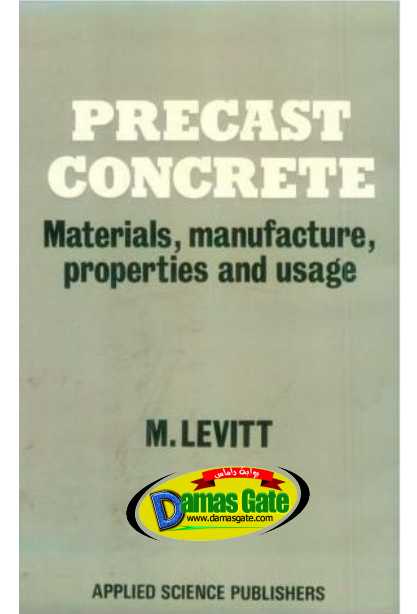Precast Concrete - Materials, Manufacture, Properties and Usage, M.Levitt
INTRODUCTION
This book is intended to meet the need for a general treatise on precast
concrete, as the last relevant book on this subject was published in 1961.
Since then there have been several publications dealing with particular
parts of the subject which serve as useful back-up reading, but the precast
concrete industry is complex and needs to be discussed in both general
and particular terms over a large number of subject areas.

The book is aimed not only at people who have considerable
experience but also at those new to the subject. Both of these groups of
people will wish to extend their knowledge, either in their existing fields
or new ones. Although high degrees of knowledge of mathematics,
physics, chemistry and engineering are not required of the reader, it is
assumed that he or she will have had two or three years of what may be
loosely and internationally described as further education. Specifiers,
manufacturers, contractors and teachers will all find something of use.
Engineering design and detailing are not covered in this book but
details of materials, properties, manufacture and usage are discussed in
as full a way as possible. Most of the data, although based upon UK
experience, are equally applicable in other countries. Care has been taken
to ensure that no matter what process, environment or materials are
under consideration the reader will be able to abstract the data required
to facilitate production and use of as good a quality product as possible.
The common factors in precast concrete products are aggregates,
hydraulic cement and water, coupled with a technique for moulding these
into a required shape. Although certain rules and guidelines can be laid
down, technology can only be used part of the way, as ‘know-how’ and
a large degree of ‘alchemy’ play important roles. One of the purposes of
this book is to outline how far one can take the technology and when one
needs to develop one’s own experience. All that is asked of the reader is
the same number of degrees of flexibility as there are variables relating to the
properties of the final product. A rigid philosophy will not bear fruit,
therefore, great care should be exercised to take a number in its context
and not treat it as sacrosanct.
Download
*